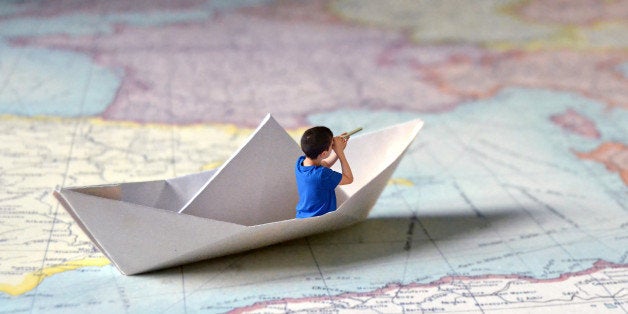
"I am enough of an artist to draw freely upon my imagination," Albert Einstein once said. "Imagination is more important than knowledge. Knowledge is limited. Imagination encircles the world.”
The elusive quality of mind has long been mused about by artists, philosophers and psychologists who have sought to uncover the driving force behind great works of art and groundbreaking inventions.
Yet despite its role in some of the greatest discoveries ever made, our understanding of imagination -- where it comes from and what it looks like in the brain -- has been remarkably limited. That's now beginning to change, and a new study from researchers at Dartmouth University is providing some answers.
Einstein, the revolutionary physicist, employed a highly creative scientific process, one that no doubt played a significant role in some of his greatest discoveries, according to Alex Schlegel, a researcher in the Dartmouth College Department of Psychological and Brain Sciences and an author of the study.
The Dartmouth researchers found that the activity of what we call the imagination is the product of a widespread network of neurons (what they call the "mental workspace") that consciously alters and manipulates images, symbols, and ideas, and gives us the intense mental focus that we need to come up with new ideas and solutions to complex problems.
"When asked what his scientific thought process looked like, Einstein would say that he'd take an image in his mind and play around with it and manipulate it, looking at it from different angles -- combining and breaking things apart," Schlegel told The Huffington Post.
"The way we think about the mental workspace is in terms of all these really incredible, flexible things that humans can do," he added. "We can create art, we can think scientifically, we can think mathematically. And in a lot of those cases, that requires the ability to have a mental representation of ideas, symbols and images, and to be able to play around with them in the mind."
To witness the workings of the imaginative brain, researchers hooked 15 participants up to an fMRI scanner and asked them to visualize specific abstract shapes, then told them to imagine combining those shapes into more complex figures. What they discovered was a large cortical and subcortical network across the brain that produced the manipulations of imagery -- the so-called mental workspace.
The network ranged from areas that govern visual processing to other areas related to attention and executive processes. "They're all working together to make manipulations happen," Schegel said.
The findings, which will appear this week in the journal Proceedings of the National Academy of Sciences, can help us better understand how the organization of the brain creates an environment that allows us to think openly and creatively.
The study is also a significant departure from most previous research on imagination, which has looked at different parts of the brain in isolation in an attempt to locate the seat of creative activity. The Dartmouth findings and other recent studies have effectively debunked the popular theory that the "right brain" governs creative activity; mounting research suggests, instead, that the human brain is far more vast and interconnected than such simple explanations would indicate.
But the question of what makes some of us more imaginative than others -- and how we might be able to enhance or trigger our own creativity -- remains largely unresolved.
"There's a lot of debate about what makes some people more creative than others," said Schlegel, who pointed to the mental workspace for clues. "That is one possibility, that we tap into this network more or better than others -- maybe there are stronger connections between these areas of the brain."
The new insights also offer a starting point for research that could help design better learning processes or potentially advance artificial intelligence.
"Our findings move us closer to understanding how the organization of our brains sets us apart from other species and provides such a rich internal playground for us to think freely and creatively," Schlegel said in a press release accompanying the study. "Understanding these differences will give us insight into where human creativity comes from and possibly allow us to recreate those same creative processes in machines."

